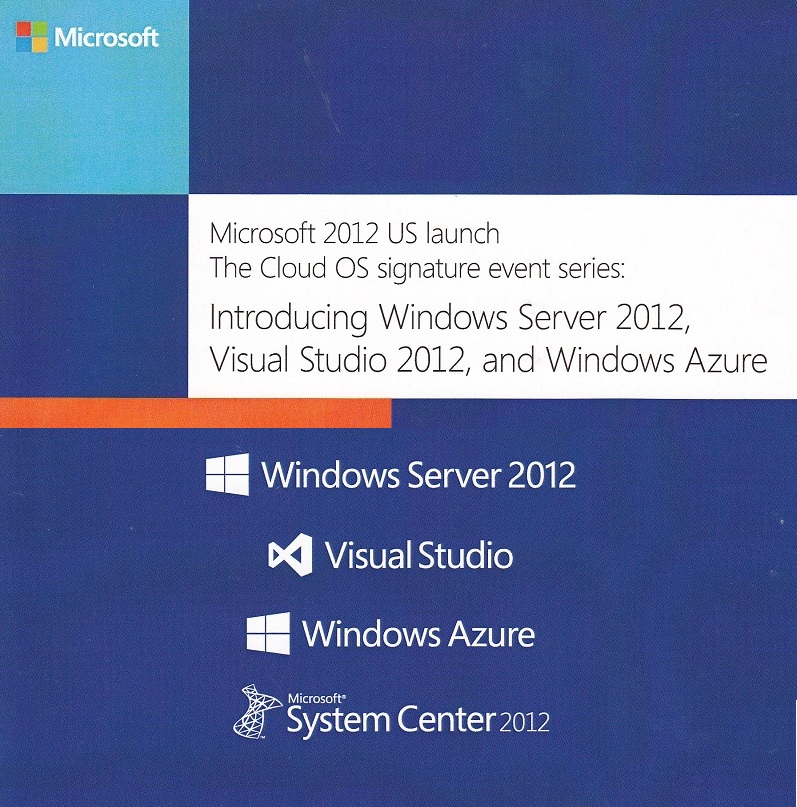The Cloud OS Signature Event Series
I recently attended a local event for the US Launch of Windows Server 2012, Visual Studio 2012 and Windows Azure. To say there’s a lot to talk about would clearly be an understatement. While I couldn’t do all the new features/enhancements justice in a blog post I will however touch on a few key aspects worth mentioning. Needless to say, if you have the opportunity to attend this event I think you’ll find it most valuable. It’s like a mini-Build event (i.e. 3 different tracks [IT Decision Maker, IT Professionals and Developers], keynotes, HOL’s, etc.). And yes, there’s also free swag! :-)
Virtualization
Hyper‑V in Windows Server 2012 dramatically increases the levels of mobility and flexibility in private clouds by increasing the speed of live migrations, which in turn supports the simultaneous migration of many virtual machines in a cluster. It also supports live migration outside of a clustered environment – between machines that share nothing but a simple network connection – providing the flexibility to place any application workload on nearly any physical machine.
Increased hardware support in Hyper-V includes:
- 64-node Hyper-V clusters that can simultaneously run up to 4,000 concurrent virtual machines.
- Support for configuration of virtual machines with up to 64 virtual processors and 1 terabyte of memory.
- Hyper‑V takes advantage of Non-Uniform Memory Access (NUMA) to speed up the performance of virtual machines. NUMA is a computer architecture used in multiprocessor systems in which the time required for a processor to access memory depends on the memory’s location relative to the processor.
Every App, Any Cloud
Flexible: Enable hybrid and symmetrical applications across premises and private, hosted, and Windows Azure public clouds. This is important as developers need to think about how to build and deploy next-generation applications, many of which will be cloud applications. For example, developers may want to run applications that they developed for Azure on premises – programming symmetry and common development tools between Windows Server 2012 and Windows Azure can help achieve this goal.
Scalable and elastic: Provide frameworks, services, and tools to increase scalability and elasticity for applications that support multitenancy and that improve website density and efficiency. This is important not only for enterprise ITPro’s, but also to enable service providers to more effectively build, provision, and manage a hosting environment.
Open: Enable business-critical applications and enhanced support for open frameworks, and open source applications, and various development languages. This is important as the new .NET Framework 4.5 offers core new features and improvements, such as support for asynchronous file operations, and enhancements around web, networking, WPF and others. Also, with Windows Server 2012, web standards, PHP and node.js “just work.”
Summary
Windows Server 2012 was designed with the above trends in mind, leveraging Microsoft’s experience in running and operating large scale cloud services based on modern, global applications every day. Windows Server 2012 is a broad, scalable, and elastic server platform that gives you the flexibility to build, deploy, and manage applications and websites on-premises, in the cloud, and in a hybrid environment, using a consistent set of tools and frameworks. It helps you flexibly build, and faster deploy and scale web applications on-premises and in the cloud, using your development skills and knowledge.
